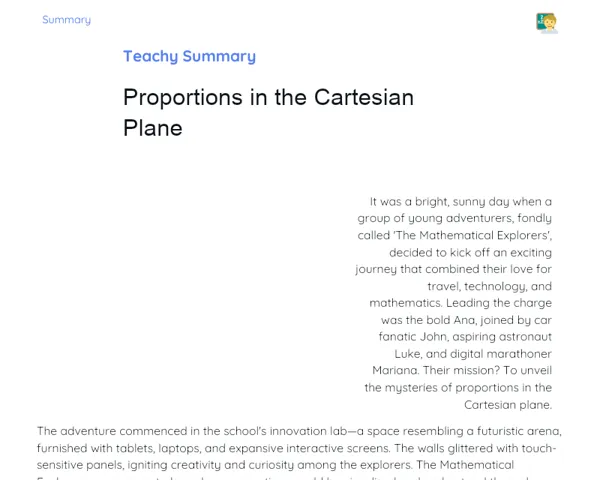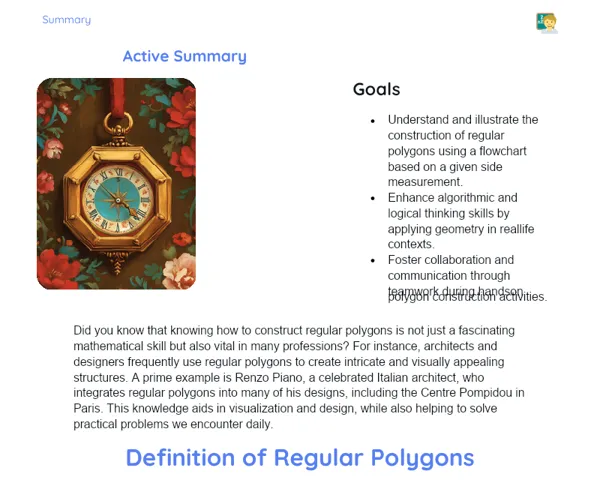Socioemotional Summary Conclusion
Goals
1. Learn to convert units of mass and volume, like liters, cubic meters, grams, and kilograms. 💪📏
2. Solve real-life problems involving the conversion of these measurement units. 🧩🔍
Contextualization
Have you ever thought about how we measure the exact quantities of ingredients while cooking or how much fuel we need for a road trip? 🧑🍳🚗 This understanding is thanks to converting mass and volume measurement units! Grasping the concept of conversion not only makes our everyday tasks more manageable but also helps us make better-informed decisions. Let's explore this exciting world of numbers together! 🚀📚
Exercising Your Knowledge
Definition of Mass and Volume Units
Mass refers to the quantity of matter in an object, while volume indicates the space that object occupies. Knowing these definitions is crucial for accurately converting measurement units and addressing everyday practical problems. It highlights the significance of precise measurements and equips us to make informed and responsible choices.
-
Mass: The amount of matter in an object. Examples: an apple, a book, a backpack.
-
Volume: The space an object takes up. Examples: a glass of water, a box, a room.
-
Importance: Fundamental concepts for measuring and comparing things, essential in both scientific contexts and daily life.
Mass Measurement Units
The primary units for measuring mass include gram (g), kilogram (kg), and ton (t). Understanding the relationships among these units is key for making accurate conversions. This knowledge assists in solving practical problems, such as figuring out the weight of ingredients for a recipe or assessing the load a truck can handle.
-
Gram (g): The basic unit of mass, useful for measuring small items.
-
Kilogram (kg): 1 kg = 1000 g. This unit is more commonly used for weighing individuals and food items.
-
Ton (t): 1 t = 1000 kg. Typically used for large quantities, such as the capacity of trucks.
-
Relevance: Helps in tackling daily challenges and understanding the relationships between different quantities.
Volume Measurement Units
The main units for measuring volume are liter (L) and cubic meter (m³). Being able to convert between these units is vital for addressing everyday problems like calculating the amount of water in a swimming pool or the space in a room. This understanding also aids in visualizing and comparing various volumes more clearly.
-
Liter (L): The basic unit of volume used for measuring liquids like water and oil.
-
Cubic meter (m³): 1 m³ = 1000 L. Used for larger volumes such as spaces and big containers.
-
Relevance: Enhances comprehension of different volumes and helps in solving practical problems related to space.
Key Terms
-
Mass: The quantity of matter an object has. Origin: Classical physics.
-
Volume: The space taken up by an object. Origin: Geometry and physics.
-
Gram (g): The fundamental unit of mass in the metric system.
-
Kilogram (kg): A unit of mass used for larger objects, equivalent to 1000 grams.
-
Ton (t): A unit of mass for substantial quantities, equivalent to 1000 kilograms.
-
Liter (L): The primary unit of volume in the metric system.
-
Cubic meter (m³): A volume unit that represents the space occupied by a cube with 1 meter side length, equivalent to 1000 liters.
For Reflection
-
How did you feel when faced with a unit conversion problem for the first time? 🤔✨
-
Why is it important to know how to convert measurement units in everyday life? Share examples from your routine. 🚀🏠
-
While assisting a friend with a conversion challenge, did you notice any new emotions? How did that influence your understanding and collaboration? 👥💡
Important Conclusions
-
We learned how to convert units of mass and volume, like liters, cubic meters, grams, and kilograms. 📏⚖️
-
We recognized the significance of these conversions in daily activities, such as cooking or calculating fuel needs. 🍳⛽
-
We practiced solving practical problems involving these conversions. 🧩🔍
-
We developed socio-emotional skills while tackling mathematical challenges, fostering traits like self-control and resilience. 💪🧠
Impacts on Society
The skill of converting mass and volume units greatly influences our daily routines. Imagine trying to cook without knowing the precise amounts of ingredients or refuelling your vehicle without estimating the fuel needed. This ability adds organization and efficiency to our lives, allowing us to complete tasks with accuracy and assurance. 🚗🍴
Additionally, by confronting conversion problems, we engage our minds and cultivate emotional abilities like patience and persistence. Overcoming these challenges not only boosts our confidence but also equips us to handle more complex issues in our academic, personal, and professional spheres. 🎓💼
Dealing with Emotions
Let's practice the RULER technique! When dealing with unit conversions, first, recognize the emotions you experience, whether it’s frustration or happiness. Next, understand what triggered these feelings—was it a challenging problem or a solution you uncovered? Name these emotions accurately and express them appropriately, whether by discussing it with a friend or jotting it down in a journal. Finally, regulate these feelings by taking deep breaths and reminding yourself that each challenge is a chance for growth. 🌟📘
Study Tips
-
Practice unit conversion in real-life scenarios, like measuring ingredients while cooking. 🧑🍳📏
-
Utilize educational videos and online games to make learning enjoyable and engaging. 🎥🎮
-
Form study groups with classmates to collaboratively solve problems and exchange knowledge. 🤝📚



